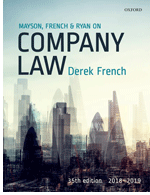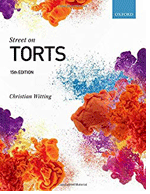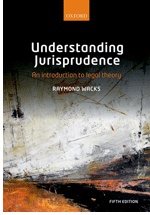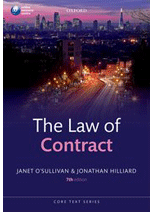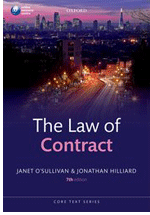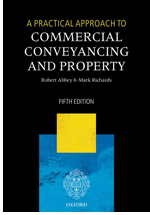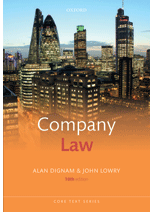
Publisher: Oxford University Press
Edition: 10th Edition (August 2018)
ISBN: 978-0-19-881183-1
Price: £34.99
It has been a number of years since I last had the opportunity to read Core Text: Company Law (sixteen years, to be accurate!). I do, however, have fond memories of using it: it gave the reader a clear and accessible account of a notoriously complex area of law. Such texts were always popular with students! I was very pleased to see that Core Text: Company Law continues to do exactly what it did for me sixteen years ago. Whilst covering many more pages, it remains a clear and accessible account of company law: ideal for law students and practitioners wanting an accessible overview of the law.
Core Text: Company Law is split into three parts: (i) fundamental principles, (ii) behind the corporate veil and (iii) issues of corporate authority. Each part has a number of chapters. For example, part (i) includes chapters on: corporate personality and limited liability; promoters and pre-incorporation contracts; and raising capital: equity and its consequences. Part (ii) includes chapters on: share capital; classes of shares and variation of class rights; and statutory shareholder remedies. Part (iii) includes chapters on: corporate management; directors’ duties; and corporate rescues and liquidations in outline. This layout is comprehensive but not overwhelming: no mean feat for a company law textbook.
Each chapter follows a similar format for those readers familiar with Oxford University Press’ ‘Core Text’ series: a summary (perhaps better described as an overview); an introduction; the substantive text; further reading; and self-test questions. But there are (somewhat disappointingly) no answers to those self-test questions: instead they form the basis for further discussion and self-inquiry. The text is (on the whole) clear, accessible and engaging. Unfortunately, there is a technical error in paragraph 17.62 where the authors refer to Sections 137 to 139 of the Consumer Credit Act 1974. These provisions were repealed on 6 April 2007 for agreements entered into on or after that date (subject to some technical transitional provisions).
Taking everything into account, I recommend Core Text: Company Law to anyone needing a clear and thoughtful account of the law. It has been thoroughly updated since the last edition to include the latest case-law and legislation updates, plus the Insolvency Service’s review of the corporate insolvency framework. It has a treasure trove of further reading sources: vital for anyone wanting to delve into the wealth of commentary and analysis of company law. Its price also means it provides good value for money.
Reviewed on 23 December 2019

